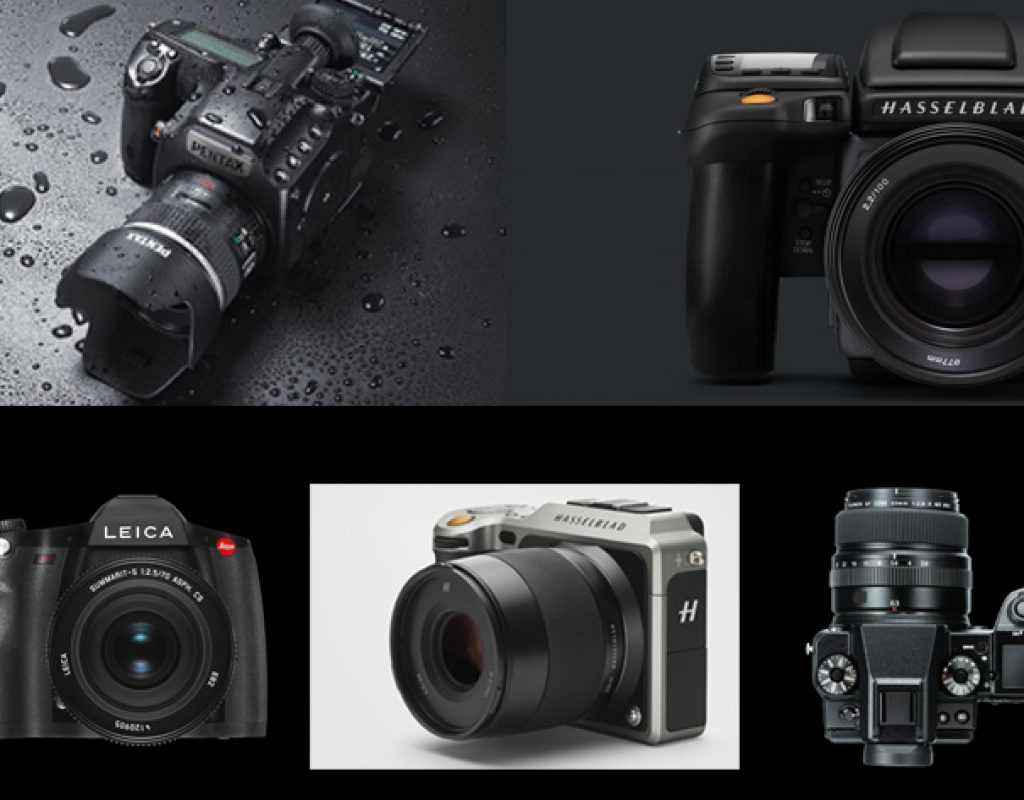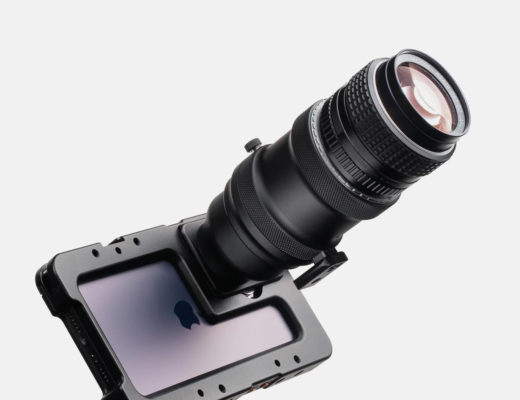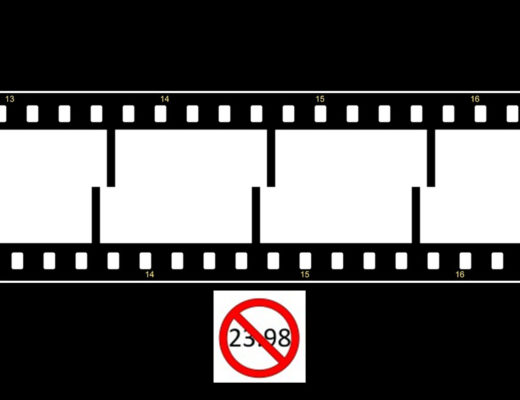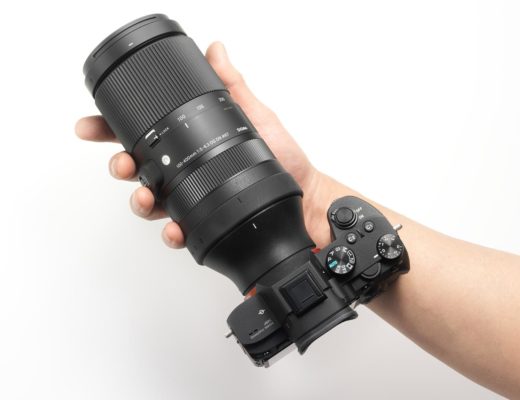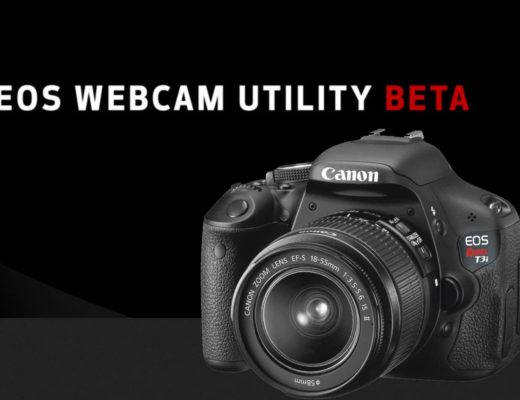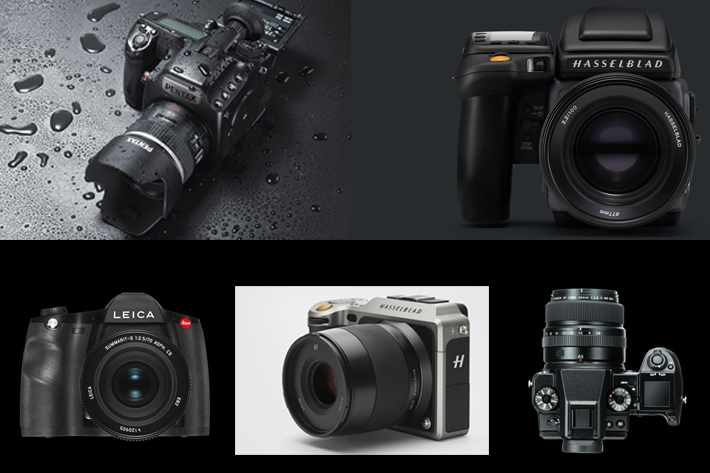
The rumors of Canon’s medium-format camera are, as of yet, still rumors, but there are other names to check when it comes to medium-format cameras that can be used for video. We picked some of them for this first guide on medium-format cameras for 2018.
Medium-format cameras are not the type of camera most people will think about when looking for a tool for video, but there is a market for them too, and some companies not only want to keep the idea alive as have entered or reentered, as is the case with Fujifilm, the market.
Before we continue let me state that I used the title “ The best medium-format cameras for video”, because the term – the best – seems to be what catches the attention of readers. This guide, though, is more about the only medium-format cameras available that may interest you if you want a medium-format model that also offers video options.
Medium-format digital cameras were, when digital first became a reality, away from the limelight, because the technology available made it difficult to create sensors that big at an acceptable price. Full frame or 35mm suffered the same problem, and that’s the reasoning behind the blooming of the APS-C format, which was an invention – APS or Advanced Photo System – from the last days of film, when companies were looking for an alternative to 35mm.
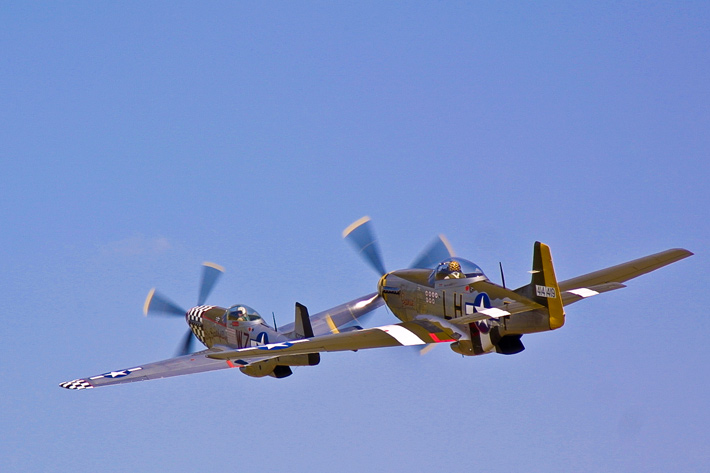
We’re almost two decades away from the mass introduction of digital sensors, if you consider that the Canon D30, which was a pure Canon camera, broke the price barrier and attracted more users to the digital SLR market. While Fujifilm, with the S1 Pro, or Nikon’s D1, were professional cameras, not accessible to everyone, the D30 was “accessible” to almost everyone and was a technological revolution at launch: the first CMOS sensor for Canon, a 3.1 megapixel DSLR announced May 17, 2000.
Although the camera was designed to a prosummer market, Canon introduced a professional package including a Canon EOS-D30 Body, a EF 28 – 105 mm f/3.5 – 4.5 lens and a 1GD IBM Microdrive, which was the cheapest media storage solution at the time… although, as I remember, it costed a whole lot of money. I know, because I bought a kit myself, and used the D30 extensively photographing, among other things, airplanes in flight during airshows, despite the “slow” 3 fps offered by the camera.
Canon introduced its own professional model the next year, 2001, presenting the EOS 1D, with 8fps burst mode and a 4-megapixel sensor. Great specifications then, one has to wonder why so many complain about “not having enough” megapixels and speed these days…
This brief note serves to remind us that with the fast introduction of digital sensors, medium-format cameras, which were mostly used by professionals, became very expensive on the transition to digital. Some companies, as Contax or Bronica, a brand I used with film and which could not make the transition to the new technology, simply vanished in the late 90s or the first half of 2000. Medium-format cameras are, usually, system cameras, built around a body that is able to take lenses, viewfinders and film backs, which was/is a versatile way to change films anywhere you needed.
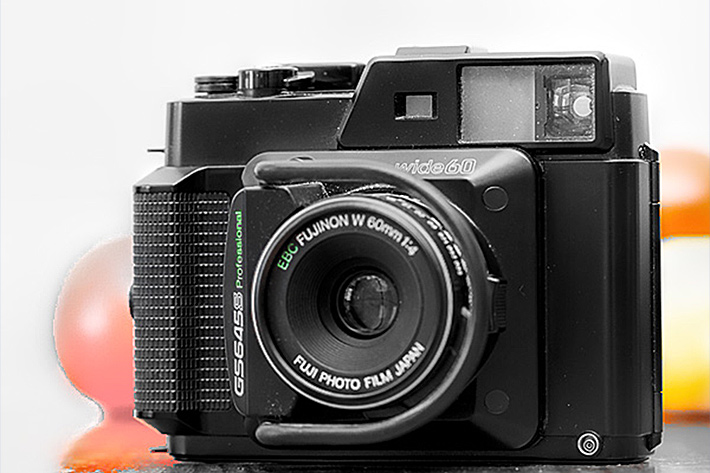
Medium-format, which refers to a format offering film or a digital sensor larger than 35mm but smaller than 4x 5 inches, and which marks the entrance to large format photography, would make its way towards digital through digital camera backs, which took the place of the old film backs used by these modular systems. Although since the early 90 different companies marketed digital backs, the low resolution and high price, along with the fast evolution of sensors for full frame cameras, eroded the market, while a question was raised: do we need medium-format digital sensors, when so many pixels can be packed on a full-frame sensor?
Apparently we do, at least for some types of photographic work, because after a period when medium-format digital sensors seemed to be on the way to be extinct, there is a growing interest for cameras with big sensors. It’s not very different, after all, from what was perceived in the hey years of medium-format film cameras. There was always a keen passion for the format, and nothing is different now, it seems. The other day I picked my old Fujifilm GS645s Professional camera and simply feeling the touch of the body, the controls, made me travel back in time to when I would view the 6×4.5 format slides on a light table.
While some of the systems now available are mostly for studio use, there is a new crop of cameras which joins the common models already available and makes me believe there is a market for those gigantic sensors. It’s not for everybody, which is the exact same thing that happened before, but being able to chose a medium-format digital sensor for some of your photography, within what can be considered a reasonable price – still expensive, though – reveals how much the technology has evolved, to give us more choices. Is a medium-format digital camera the best choice for you? I don’t know, that’s something each reader has to decide. A medium-format camera will not make you a better photographer or videographer, will simply make you, probably, spend more money.
This guide is about choosing a medium-format digital camera for video. Some will ask if it makes sense to create such a guide, as there are, as many will no doubt suggest, more practical and accessible solutions for creating video. Other will add that other type of cameras offer 4K and other options not available here. I know all that, but choosing a camera is also, many times, a very personal thing, a bit like choosing a shirt that you feel comfortable wearing. There is not “one size fits all” solution, and this guide is aimed at those who have decided to own a medium-format digital camera, because they want it or need its resolution and/or specifications, but also want to know which options each model offers in terms of video.
For some people this guide might be a valuable starting point to make a trip back down memory lane, while others may use it to further explore the options. It’s not always about buying the most popular tech, it’s about buying something that resonates with you, and serves you both as a photographic tool and a video machine, while giving you the full pleasure of using a tool you’ve chosen according to your specific needs and passion.
So, having explained the reason for this guide, let’s look at the cameras available.
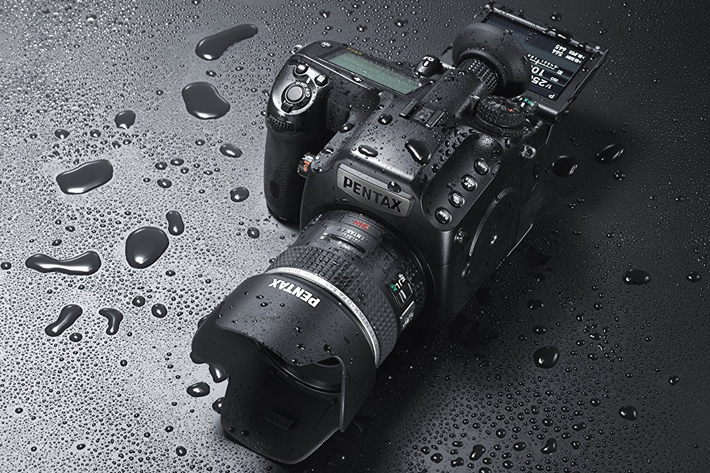
Pentax 645Z, classic DSLR in digital
Pentax 645 single lens reflex models were popular when emulsion was the “sensor”, and the company, although today owned by Ricoh, continues to offer medium-format, now in a digital version. The 645Z available offers a large 51.4 megapixel 43.8 x 32.8mm CMOS image sensor that’s 1.7x larger than that of a 35mm camera.
As a video machine, this is far from the latest trend, no doubt, but as said earlier, the choice of a medium-format digital camera may have to do with photography first, with video as a complementary feature that is welcome and will be used. The Pentax 645Z, which was the first medium-format camera to feature video, offers Full HD (1920 x 1080 at 60i/30p) capture in the H.264 format. The complete specs in this area are as follows: Full HD (1920×1080, 60i/50i/30p/25p/24p) and HD (1280×720, 60p/50p/30p).
Able to create 4K time-lapse movies or sequences, the camera switches from still image to video recording with the flip of a dedicated switch, and comes with a stereo microphone terminal for external microphone connection. It is possible to adjust the audio recording level manually and visually monitor sound levels during recording, but there is no provision for external headphones. Movie recording time is, according to Pentax, up to 25 minutes, and the camera automatically stops recording if the internal temperature of the camera becomes high.
The durable magnesium body fully weather sealed and coolproof is an invitation to take this camera from the studio to the field, either for video or photography. The 8256 x 6192 pixels sensor guarantees a high resolution image when every detail counts. The Dual Card Slot, able to receive two SD cards (SD, SDHC or SDXC memory cards) allows to save images sequentially, simultaneously to both, as separate RAW/JPEG and also copy images between slots.
As a photographer’s tool, the camera has everything expected in a model that costs over $5000, and some features Pentax owners associate with the brand. HDR mode to composite three images of varying exposures into one photo with extra-wide dynamic range, multi-exposure mode, a CTE white-balance control mode to emphasize the predominant colour of a particular scene, are some of the features of Pentax’s actual solution for medium-format.
Investment in a new format means that new lenses are needed. Pentax has a series of lenses for its 645Z which you may want to explore, to define if this is the solution you want/need. The lenses available cover everything from wide-angle, with the HD PENTAX-DA 645 28-45mm F4.5ED AW SR, to telephoto, with the smc PENTAX-FA*645 300mm F4 ED [IF], with, in the middle, solutions as the smc PENTAX D-FA 645 55mm F2.8 AL (IF) SDM AW, the HD PENTAX D-FA 645 MACRO 90mm F2.8 ED AW SR and the smc PENTAX-FA645 75mm F2.8. The five lenses cover a wide focal range, enough for most purposes, if you decide that the Pentax 645Z is the camera for you.
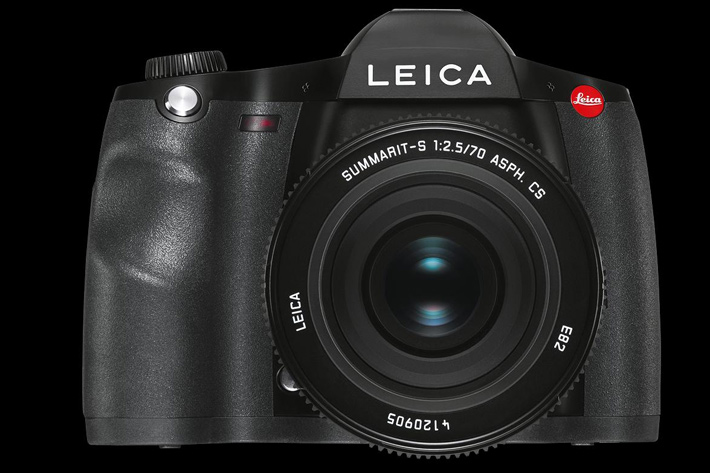
Leica S the classic DSLR shape for medium-format
With the Leica S-System announced in 2008, the German company wanted to redefined the medium-format in the digital world. The Leica S2, from 2009, was the first model, offering a CCD image sensor measuring 30×45 mm and containing 37 million pixels. This over-sized DSLR able to create images with 7500 x 5000 pixels started a series that today is represented by two cameras: the Leica S (Typ007) and the Leica S-E (Typ 006), which share many similarities but also some crucial differences: the Leica S offers a CMOS sensor against a CCD from the S-E, and has a ISO range all the way up to 6400 against 1600 from the second model.
For this guide we will look at the Leica S, as it is the one that better covers the video segment. Besides being a stills camera, the S (Typ 007) also offers the ability to record 4K video (4096 x 2160) within a Super 35-sized area of the sensor, or full HD 1080p video using the entire sensor area. Frame rates go as high as 30p for Full HD and a frame rate of 24 fps can be used during 4K recording. Complete control of exposure and audio settings is available in both recording modes, and professional features as timecode, used to benefit multiple camera setups are present, along with focus peaking or an histogram showing exposure clipping which can be viewed during recording.
Uncompressed video can be recorded to an optional external recorder with 4:2:2 color sampling, using the HDMI Type c interface, while a 3.5mm audio jack incorporated suggests the potential for better recording of audio, used in combination with the optional Audio-Adapter S. these features, This, together with the exceptional quality of Leica S-System lenses, lends video recordings a unique look that warms the hearts of filmmakers. Videos produced with the Leica S captivate viewers with the bokeh created by the use of selective sharpness that is typical of Leica still pictures.
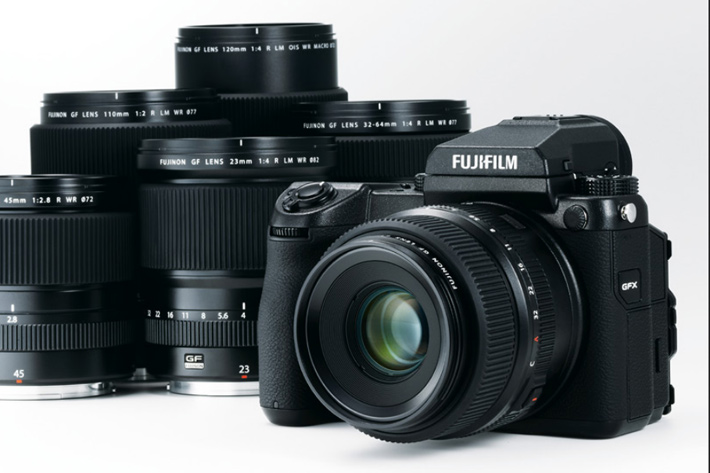
Fujifilm GFX 50S, medium-format on a budget
If you want a lightweight and cheap mirrorless – “cheap” related to medium-format, that is – then the Fujifilm GFX 50S is the camera for you. Price wise it may not be very different from Hasselblad’s X1D, just shy of $7000, but when it comes to lenses, you’ll find Fujifilm has developed a nice series of lenses for this camera at a more affordable price than you’ll pay for the X1D lenses. So, that’s something to keep in mind when picking your medium-format camera. Just a quick note: the Pentax 645Z is available at a lower price, if you don’t mind buying the pioneer of the medium-format when it comes to the use of video, and carrying a bigger and heavier camera.
Announced at the end of September 2016, the Fujifilm GFX 50S mirrorless digital camera features the new Fujifilm G format 43.8 x 32.9mm sensor with 51.4MP resolution in a body which is ideal for landscape and travel photographers. The sensor can be adapted to various aspect ratios, including 4:3 (default), 3:2, 1:1, 4:5, 6:7 and 6:17, which were available in large and medium format film cameras. The GFX 50S uses the high-performance “X-Processor Pro” imaging processor to provide Fujifilm’s outstanding color and tone reproduction at an extremely high level.
With the camera Fujifilm introduced a new lineup of Fujinon GF lenses, which keeps growing, designed specifically for the GFX. The lenses available cover everything from 23mm to 120mm, starting with a ultra-wide GF23mmF4 R LM WR (equivalent to 18mm in 35mm format) going through a wide GF45mmF2.8 R WR (equivalent to 35mm in 35mm format) a standard prime GF63mmF2.8 R WR (equivalent to 50mm in the 35mm format), a wide-angle standard zoom GF32-64mmF4 R LM WR (equivalent to 25-51mm in 35mm format), a mid-telephoto macro 1:0.5 GF120mmF4 Macro R LM OIS WR (equivalent to 95mm in 35mm format) and a fast aperture mid-telephoto “GF110mmF2 R LM WR” (equivalent to 87mm in 35mm format), all with prices ranging from $1500 to $2800.
In terms of video, the Fujifilm GFX 50S is able to capture Full HD – 1920×1080 29.97p/25p/24p/23.98p 36Mbps, in Film Simulation modes. It is obvious that the camera was not designed to be a video tool, but a photographer’s tool that also captures video. Despite not being 4K – as some say it should be – the GFX50 S still has little touches revealing that Fujifilm cared: there are sockets for both headphone and microphone, option to adjust the internal microphone and even focus peaking is available.
The Fujifilm GFX 50S marks the return of Fujifilm to medium-format, although under digital, and may well be the starting point of a family of cameras, as the company suggested from day one this is a system more than a one single camera and a few lenses. A new, probably even more affordable GFX medium-format camera may arrive this year, in time for Photokina, a rumour even more credible now, that the revelation of financial results for Fujifilm’s imaging division in 2017, indicates it was wise to invest in the research and development of new solutions.
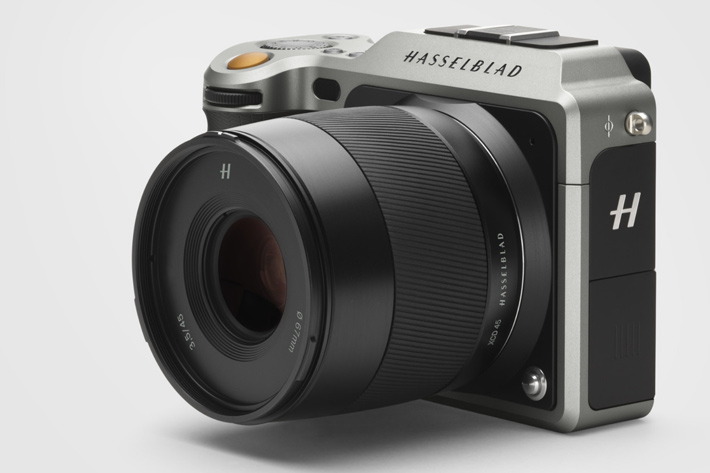
Hasselblad X1D, the Swedish “game changer”
Hasselblad promised a “game changer” when announcing the Hasselblad X1D in 2016, but if video is the most important feature you look for in a camera, this is probably not the camera for you. The medium-format mirrorless with a price close to $7,000 is – only – a Full HD video machine, although its CMOS sensor, which offers 8272 × 6200 pixels, suggests the potential for the creation of unique time-lapse sequences.
https://youtu.be/6MJhuw8i09c
The ability to expose from 60 minutes to 1/2000th sec. with full flash synchronisation throughout the range, further confirms the potential for creative uses of a model that packs a 50MP sensor inside a body which is light, at 725g, portable and beautiful. Handmade in Sweden, the X1D is supported by a completely new family of dedicated autofocus lenses, XCD, which has been developed to support optical quality and portability, and which Hasselblad has been expanding. The camera is also compatible with all 12 lenses and lens accessories from the Hasselblad professional H System, through an adapter, meaning it has a wide range of optics available to be used with.
With Wi-Fi, built-in GPS, a flash hot-shoe for Nikon flashes, ISO range from 100 to 25,600, Dual SD card slots, USB 3.0 Type-C connector, Mini HDMI, Audio In/Out, the Hasselblad XD1 seems ready to be a trusted partner and ideal travel companion for passionate photographers who also want to be able to explore moving images. Despite the resolution limitations, as there is only 1920×1080 video available, at H.264 compressed (25 fps), the X1D has connectors for microphone and headphones, meaning you’ve control over your production of video, if Full HD is all you need.
The X1D’s high-resolution rear LCD offers touch control for all aspects of the camera’s features. The icon-based user interface speeds access to customisation options along with intuitive playback functions such as swipe and pinch to zoom, but the camera also boasts an XGA electronic viewfinder for bright, crisp viewing even under difficult lighting conditions.
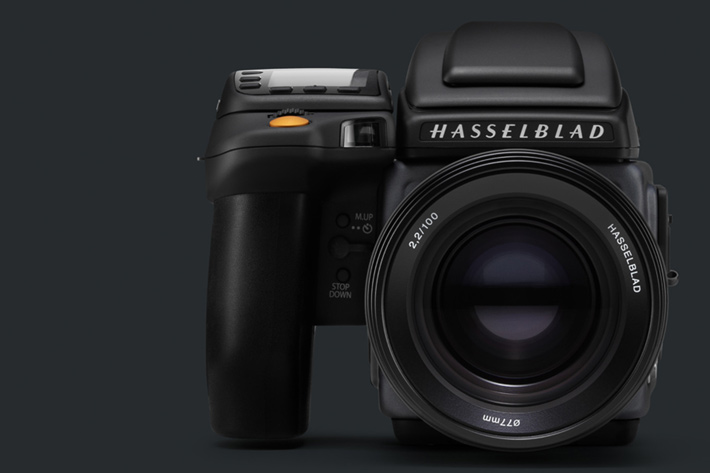
Hasselblad H6D, a monster camera with UHD 4K video
The Hasselblad H6D family of cameras is a reference for professional photographers aiming for high-resolution. With a 53.4 x 40mm 100MP CMOS sensor, with its wide ISO range, 16-bit colour data and 15 stops dynamic range, the most recent model of the camera is the H6D-400c MS, which inherits all the features and functionality of Hasselblad’s standard single shot cameras but offers a multi-shot feature able to create still images with an effective resolution of 400MP via 6 shot image capture.
The H6D-400c MS, which will begin shipping March 2018 with a suggested price of $ 47,995, is also able to capture video, in this case Full HD (1920 x 1080p), or UHD 4K (3840 x 2160p). File formats available are Hasselblad RAW (UHD, 25 fps) and H.264 Compressed (HD, 25 fps).
https://youtu.be/WqC4bhbEBF4
Comparing the Hasselblad H6D camera with “regular” video cameras will probably not make much sense, as this is mainly a photographer’s tool. Still, the videos published here, as the videos used for the other cameras, show what’s possible to achieve. The H6D, in any of its variations, is included in this guide because it gives readers a reference point in terms of medium-format models available. Also, as mentioned at the start of this guide, these medium-format cameras are not designed with video as the most important feature. These are tools for photographers who desire to shoot medium-format stills but also want to know what each model offers in terms of video.

Filmtools
Filmmakers go-to destination for pre-production, production & post production equipment!
Shop Now